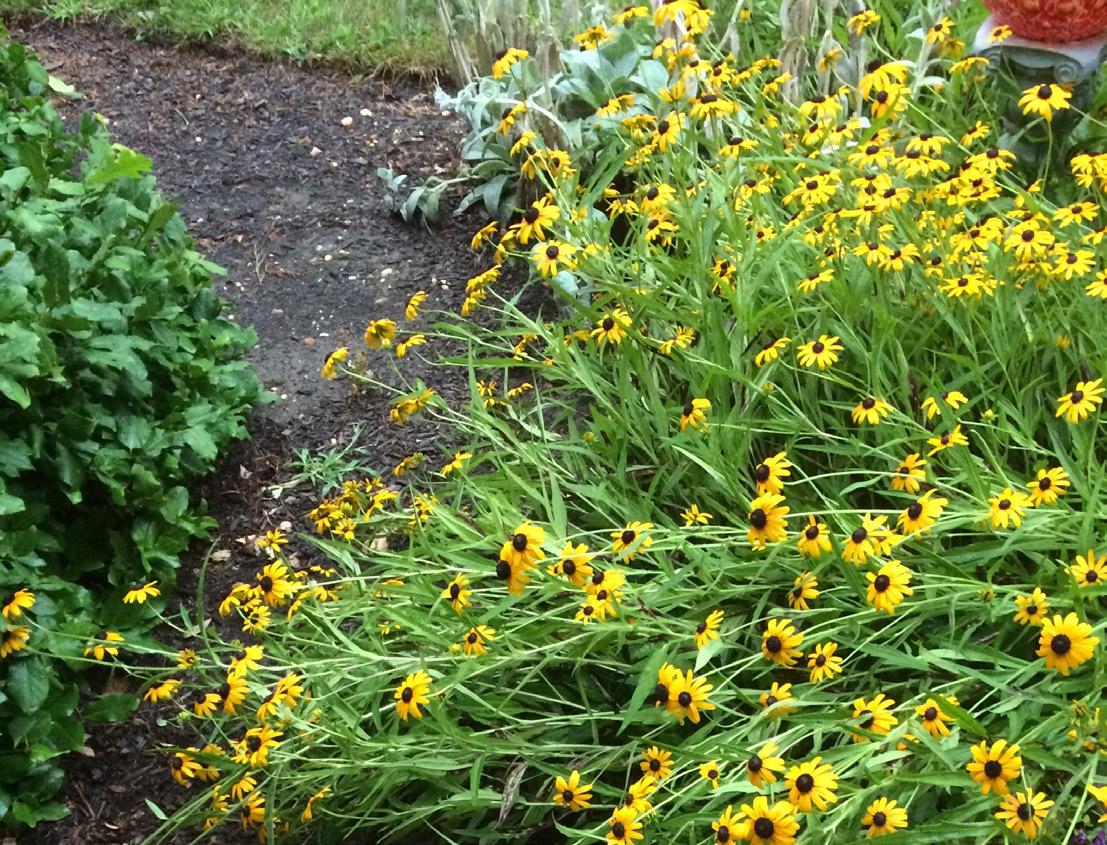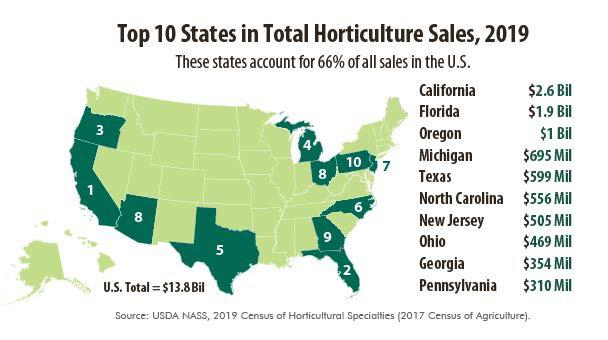
4 minute read
Landscape AlterNATIVES: Black
Feature Story Landscape AlterNATIVEs: A Guide to Native Landscape Plants: BLACK-EYED SUSAN (Rudbeckia hirta)
by Steven Yergeau, Agriculture & Natural Resources Agent - Ocean & Atlantic Counties
Native plants are a good way to incorporate sustainable vegetation into yards for clients who are environmentally minded. Native plants are adapted to local climate and soil conditions, requiring less water, fertilizers, and pesticides than non-native vegetation. For landscapers who have property owners looking for native alternatives to non-native vegetation, this column provides options to meet your client’s needs.
Black-eyed Susan (Rudbeckia hirta) is a native flower of the Asteraceae family, which includes asters, daisies, and sunflowers. It can grow up to 3 feet high with a spread of up to 4 feet at maturity (Photo 1). Black-eyed Susan gets its name from the brown to black center part of its yellow daisylike flowers (Photo 2). Black-eyed Susan is a good choice of flowering plant for many yards as it grows in a wide variety of habitats such as fields, open woodlands, or roadsides. It comes in varieties that are annual, biennial, or short-lived perennials. Blackeyed Susan does best in well-drained, moderately dry soils that are acidic (<6.8 pH). It flourishes in open areas with full sun, but also grows well in partial sun.
Black-eyed Susan thrives in soil that is occasionally disturbed. Management should include tilling the surrounding soil every two to three years to promote germination. Blooms should be clipped when they wilt to both promote blooming and reduce self-seeding.
The benefits of black-eyed Susan are many. Black-eyed Susan is a showy ornamental plant that brings color to any landscaping, especially when blooming from summer to early fall (June to September). These flowers are great for cuttings as part of a floral arrangement. Black-eyed Susan is a wonderful plant for pollinators as many insects collect its pollen and nectar. Black-eyed Susan is a great choice to use instead of many non-native flowers, like yarrow (Achillea species), butterfly bush (Buddleia davidii), and English lavender (Lavandula angustifolia).
You can find nurseries in New Jersey that sell native plants by visiting the Jersey-Friendly Yards website at http://www. jerseyyards.org/jersey-friendly-plants/where-to-buy-nativeplants/.
Steven Yergeau, Ph.D. is the Dept. Head and Agricultural Agent for Rutgers Co-operative Extension of Ocean County. He is also Assistant Professor for Ocean & Atlantic Counties. For more info visit http://ocean.njaes.rutgers.edu.
Photo 1: Black-eyed Susan flowering in late summer (Photo Credit: Steve Yergeau).

Photo 2: Close up of the flowers that give black-eyed Susan its name (Photo Credit: Steve Yergeau).
U.S. Horticulture Operations Report $13.8 Billion in Sales
New Jersey and Pennsylvania Among Top 10 States in Total Horticulture Sales

The U.S. Department of Agriculture’s National Agricultural Statistics Service (NASS) released the 2019 Census of Horticultural Specialties report, the only source of detailed production and sales data for floriculture, nursery, and specialty crops for the entire United States. The data show that horticulture operations sold a total of $13.8 billion in floriculture, nursery and specialty crops in 2019, down fractionally from the sales in 2014. The number of horticulture operations in the United States decreased 11% during this time to 20,655.
“First conducted in 1889, the horticulture census provides data on sectors for which there are no other comprehensive data sources,” said NASS Administrator Hubert Hamer.
“It is a valuable tool to highlight the contribution horticulture growers bring to our local, state, and national economies as well as changes in the industry over the past five years.”
Horticulture production occurred primarily in 10 states, which accounted for 66% of all U.S. horticulture sales in 2019. California ($2.63 billion), Florida ($1.93 billion) and Oregon ($1.02 billion) led the nation in sales.
The top commodities in U.S. horticulture sales in 2019, and compared to 2014, were: • Nursery stock, $4.55 billion, up 7% • Annual bedding/garden plants, $2.24 billion, down 13% • Sod, sprigs and plugs, $1.27 billion, up 12% • Potted flowering plants, $1.2 billion, up 11% • Potted herbaceous perennials, $923 million, down 2% • Propagative horticultural materials, bareroot, and unfinished plant materials, $720 million, up 4% • Food crops under protection, $703 million, down 12%
Other key findings from the 2019 Census of Horticultural Specialties report include: • Family- or individually-owned operations made up the largest number of operations, accounting for 52%, but corporately-owned operations accounted for 75% of sales ($10.3 billion). • Total industry expenses were up 6% since 2014, with labor being the largest cost, accounting for 42% of total expenses in 2019.
The Census of Horticultural Specialties is part of the larger Census of Agriculture program. It provides information on the number and types of establishments engaged in horticultural production, value of sales, varieties of products, production expenses and more. All operations that reported producing and selling $10,000 or more of horticultural crops on the 2017 Census of Agriculture were included in this special study. For more information and to access the full report, visit www. nass.usda.gov/AgCensus.
NASS is the federal statistical agency responsible for producing official data about U.S. agriculture and is committed to providing timely, accurate and useful statistics in service to U.S. agriculture. USDA is an equal opportunity provider, employer, and lender.










